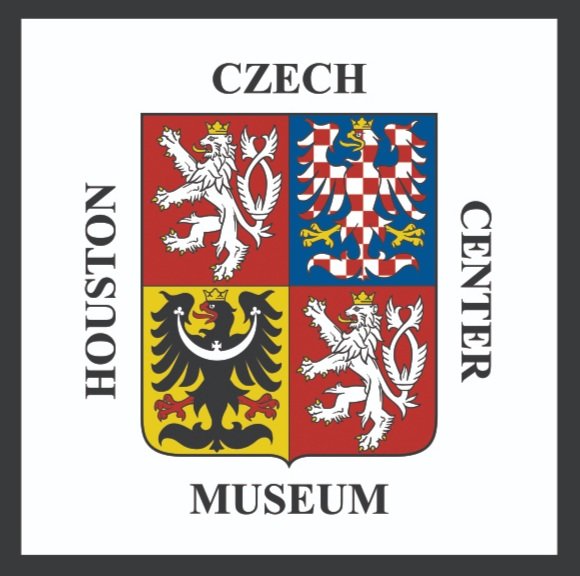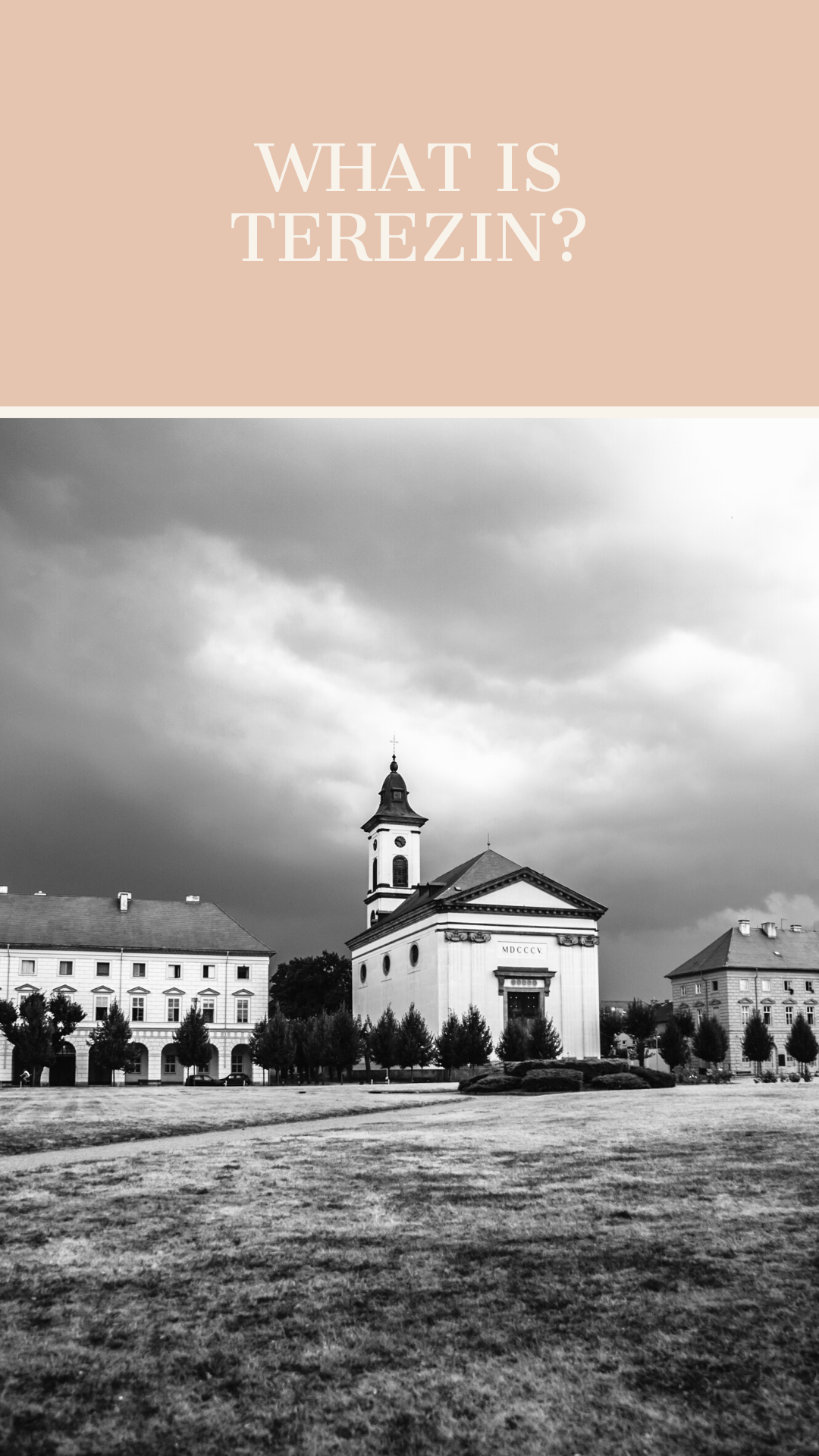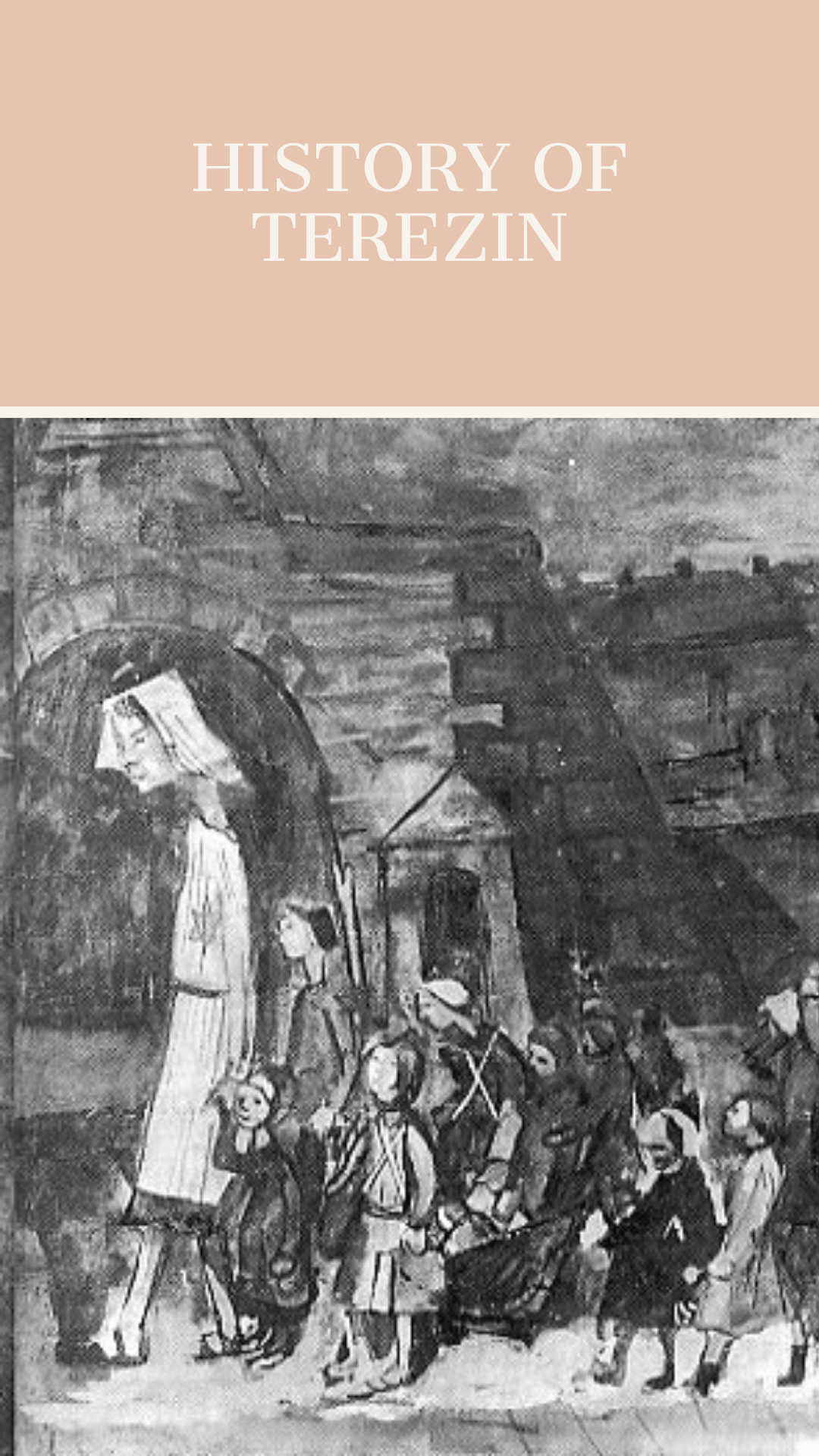The history of the Terezin Concentration Camp
Terezín was one of the greatest deceptive ploys used by the Nazis during World War II. Located 40 miles northwest of Prague, the town of Theresienstadt (Terezín) was first converted into a Jewish ghetto in December 1941, two years after World War II commenced. The Terezín ghetto was used as a “model ghetto” to deceive the outside world into thinking that Jewish prisoners were treated fairly and given satisfactory living conditions by the Nazis. Terezín was falsely presented as a generous gift from Adolf Hitler. In this town, Jewish people could live autonomously, govern themselves, and express themselves through art, music, lectures, and other intellectual endeavors during the war. However, the real Terezín was far from the model town promoted by Nazi propaganda. Of the 140,000 Jews who were imprisoned in Terezín, 35,000 died within the ghetto from starvation and disease. Another 88,000 were deported again to concentration camps in the East, such as the Auschwitz-Birkenau death camp, where they inevitably perished. To endure the horrible living conditions of Terezín, many prisoners (including many of the 12,000 children who were held there) created various forms of art as a means of survival. Art thus became the primary mode of resistance, therapy, expression, and survival for those imprisoned in Terezín.
May 30th, 1942, Hanau, Germany. Jewish families being deported from Hanau, near Frankfurt, to Terezín. Jews were given strict instructions to bring 50 kilograms (approximately 100 pounds) of possessions to the camp. Many of these belongings were then systematically stripped from the prisoners as they entered Terezín.
Who was sent to Terezín?
Terezín was converted from an Austrian town to a Jewish ghetto in 1941. Being two-thirds of a mile long and wide, the ghetto included a church, a school, a town square, and approximately two hundred homes and fourteen large barracks. Every square inch of space in the town would eventually be crammed past livable limits with Jewish prisoners during World War II. The prisoners sent to Terezín often included decorated Jewish veterans from World War I, intellectuals, writers, artists, composers, spiritual leaders, and other more respected Jewish members of society. Half-Jews, Jewish people married to Aryans, the wealthy elderly, and many children were also sent to the ghetto. Because of the composition of people sent to the camp, Terezín became famous for the artwork, both commissioned and created in secret, that survived until the ghetto’s liberation on May 8th, 1945. To learn more about some of the specific artists of Terezín, visit the “People of Terezín” tab to the left.
The Deception of Terezín
While the Auschwitz concentration camp was considered the “Kingdom of Death”, Terezín was considered the “Kingdom of Deceit”. From the very beginning, Terezín was falsely advertised to Jews as a self-governing, autonomous town where Jewish people could live in relative comfort until the war passed. During its development, the Nazis often referred to Terezín as Thereseinbad (Spa Terezín), Reichsalterheins (State Home for the Old), Judische Selbteuerwaltung (Jewish Self-Administration), and the Paradeis-ghetto. Many Jews paid for tickets or signed their property away in exchange for admission into Terezín—much of the relinquished property was subsequently sold by the Nazis to financially support the Third Reich. Upon entering the ghetto, deportees were further stripped of any personal belongings they brought with them and were given nothing in return save for some soup, potatoes, and bread. Eventually, nearby Prague amassed up to forty-five warehouses of confiscated goods from Jewish prisoners, including 778,000 books, 21,000 carpets, 603 pianos, and innumerable linens, jewelry, and silver.
After the forcible loss of home and possessions, the prisoners continued to unveil the deceit of Terezín. Men, women, and children were immediately separated upon arrival, meaning families could no longer be together. Men were sent to the Sudetenland Barracks, and women were sent to the Hamburg Dresden Barracks, where you could expect to find at least thirty women in one small room. Having housed only 7,500 inhabitants before the war, the Terezín concentration camp was expected to house almost 60,000 inhabitants within the same space. When the rooms and barracks became too full, about 6,034 Jewish prisoners were forced to crowd into the tight, dirty attic spaces, with many inhabitants having to sleep on top of their suitcases. With such crowded, unsanitary living conditions, consumption, typhus, and malnutrition ripped through the ghetto and exacted a terrible toll of almost 130 deaths per day. Disease and starvation caused mass graves to overflow, and the Germans, afraid outsiders might see the staggering number of deaths, constructed a crematorium within the ghetto to burn the bodies.
June 23rd, 1944, Terezín, Czechoslavakia. A photograph of Jewish children during the International Red Cross inspection of Terezín. Prior to the inspection, German guards “beautified” the camp and selected the healthiest, most attractive children to play on the streets during the visit. A fake soccer game was even staged as part of the deceit.
Terezín’s deception went beyond tricking prisoners—the ghetto was also used to fool the outside world into thinking concentration camps were comfortable and humane settlements, rather than overcrowded cesspools of imprisonment, forced labor, starvation, disease, and mass genocide. In June 1944, the International Red Cross, concerned about the treatment of Jews in Nazi concentration camps, decided to inspect the living conditions of Terezín. A mass beautification effort (Operation Embellishment) ensued, with the Nazis fixing up the ghetto into a model town. Fake coffee shops were erected on the street corners; houses were repainted in cheerful pastel colors with picturesque flower beds planted out front, and false shops were designed with fresh produce in the windows, baked bread being delivered through the side doors, and (confiscated) Jewish items on sale. Before the visit, the Nazis selected the healthiest-looking children to play games in the street; prisoners that were aged, sick, or malnourished were either shipped off in a mass deportation to the East (approximately 7,500 Jews were sent to their deaths before the Red Cross visit) or shoved out-of-sight in the barrack attics. The Red Cross walked away from the camp singing words of praise for how well Jewish people seemed to be treated under German rule. So effective was the deceit of Terezín, that the ghetto became the subject of the Nazi propaganda film “Terezín: A Documentary Film from the Jewish Settlement Area” (filmed July 1944 and originally called “The Fuhrer Presents the Jews with a City”). It was the only cinematic piece produced by the Germans about the state of the concentration camps.
Art Within Terezín
From the very beginning, art and education were pervasive in Terezín. Many renowned artists and up-and-coming amateurs made up the ghetto population, representing a wide variety of specialties such as painting, opera, theater, music, satire, and writing. Initially, the Nazis merely tolerated the cultural expression, but soon they publicized much of the art as part of a propaganda campaign to highlight the artistic freedoms enjoyed by the Jews in Terezín. For instance, the children’s musical, Brundibár, is a famous example of prisoner art subjugated by the Nazis for profit and propaganda. The musical score, created in 1938 by Hans Krása and performed only a handful of times before Krása’s deportation to Terezín, was smuggled into the camp. Children in Terezín were thrilled to learn and rehearse the musical under Krása’s direction, and the first Brundibár performance premiered in the Magdeburg Barracks on September 23rd, 1942. The musical was such a success that it led to a total of fifty-five performances, for many of which the Nazis sold tickets. The musical was also performed for the International Red Cross inspectors in 1944 and showcased in the Terezín propaganda film. Most of the children who performed in Brundibár were eventually gassed in death camps to the east.
Original footage of the Terezin opera Brundibar, composed by Hans Krasa. Ela Stein, a young prisoner who played the role of the cat in the musical, said, “For those moments [when performing in Brundibar], we were not branded with the yellow star, which meant that for this brief moment of time, we were free.” Most of the children who performed in Brundibar were eventually exterminated.
“[Performing operas in the camp] was a marvelous experience. It made a very difficult and disagreeable way of life, livable in as far as we had some kind of a goal. No matter how bad the day was, no matter how hungry I was, there was something to look forward to the next day. And the most incredible thing happened. You forgot you were in a Concentration Camp.”
Not all art was permissible by the Nazis, and many forms of expression had to be created in secret. Much of the art from Terezín reflects the daily horrors experienced by the prisoners, such as the cramped living conditions, the severe food scarcities, the rampant disease, the unwarranted beatings, and the ever-present fear of deportation or death (synonymous words for the people of Terezín). Knowing that the Germans would not approve of such accurate representations of the camp, the artists of Terezín launched an era of active defiance where they continued to make forbidden art, satirical theater performances, political newspapers, lectures on Jewish culture, and reflective literary pieces. These art pieces were testaments to the fraudulent depictions of Terezin as a “model ghetto.” Not only does the art provide historical documentation of actual living conditions within the camp, but it also demonstrates how prisoners persisted through the daily atrocities inflicted upon them. Art became not just a source of defiance, but a method of survival.






